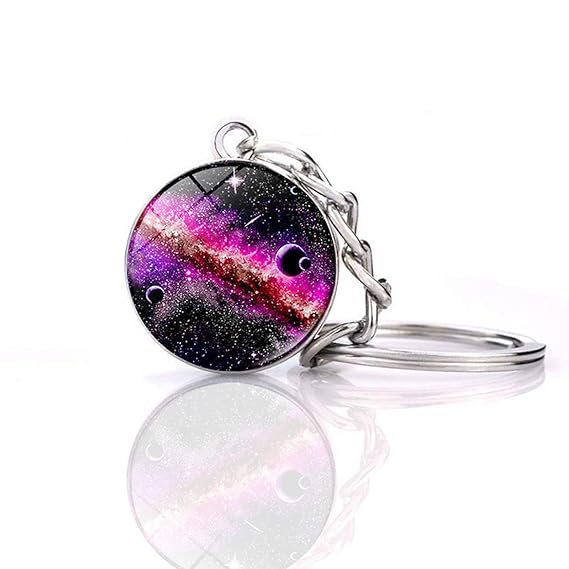Blog
Unveiling the Truth: Is Homemade Chicken Broth Healthier for You?

Ever wondered about the health benefits of homemade chicken broth? You’re not alone. Simmering chicken bones for an extended period, between 18-24 hours, releases a bounty of vitamins and minerals. This method not only makes the nutrients readily available for your body to absorb but also ensures they’re easily digestible, particularly beneficial if you’ve got a sensitive gut.
But don’t fret if you’re short on time. Store-bought chicken broth can pack the same nutritional punch, provided you choose the right brand. Look for broths that congeal when cooled, indicating a high gelatin content. Broths made from grass-fed animals and organic vegetables typically offer higher nutrient content. So, whether you’re whipping up a homemade batch or grabbing a carton off the shelf, chicken broth could be a tasty way to boost your health.
Benefits of Chicken Broth
Adding chicken broth to your diet can provide a variety of health benefits. This wholesome culinary ingredient provides both flavor and an impressive array of essential nutrients that are great for your overall health. Don’t be confused by terminology like chicken stock and chicken broth, they’re similar in both preparation and benefits although the use of bones in stock might mean a higher content of certain nutrients.
Provides Essential Nutrients
Chicken broth can be thick, rich, and packed full of important vitamins and minerals. According to the United States Department of Agriculture, certain types of bone broth (such as chicken broth) can provide over 9 grams of protein for each 8-ounce serving, along with several electrolytes and a wide variety of essential vitamins and minerals.
Here’s a brief breakdown of nutrients in chicken broth:
| Nutrient | Importance
|
|---|---|
| Magnesium | Crucial for many metabolic reactions |
| Phosphorus | Important for bone health |
| Gelatin and Collagen | Promote skin, hair and joint health |
| Glycine, Glutamine, Protein | Building blocks for cellular growth and repair |
| Iron | Essential for hemoglobin production |
| Potassium | Benefits heart health |
| Calcium | Important for bone health |
Supports Digestive Health
Drinking chicken bone broth can be a gamechanger for digestive health. It contains collagen, gelatin, and glycine which are the major building blocks of protein. Your body can utilize these nutrients to produce more protein wherever it’s required, to aid in the maintenance and repair of the gut lining. Consuming chicken broth contributes to better nutrient absorption, healthier gut microbiota, and overall healthier gut functionality.
Furthermore, chicken broth also contains the nutrient glutamine which aids in repairing the gut lining. This helps to transform the gut lining into a less permeable structure, leading to enhanced digestion and immunity support.
Helps Boost Immunity
Consuming chicken broth has a proven track record of supporting a healthy immune system. This is primarily due to the storehouse of rich nutrients that it comes with. Chicken broth boasts of more than 19 easily absorbable essential and non-essential amino acids such as arginine, glycine, and proline.
These aren’t just the protein building blocks. They’re also essential for immune support and proper digestive health. Also, chicken broth is one of the few natural food sources for collagen and gelatin, which help to form connective tissue in the body.
Comparison with Other Broths
Chicken broth is a staple in many kitchens, but it’s not the only broth out there. There’s a world of broths for you to explore, from chicken stock to bone broth. By comparing them, we can delve deeper into understanding the nutritional elements that make them distinct, as well as their unique flavor profiles.
Each of these broths bring a unique set of nutrients and flavors to your dishes. Let’s dive in and expand your understanding of these liquid gold liquids.
Nutritional Content
Chicken broth, chicken stock, and bone broth might seem similar, but they differ significantly in their nutritional content. The difference lies in the parts of the chicken used and the cooking process.
Chicken Broth: The primary ingredients for chicken broth are chicken meat and an array of aromatic vegetables. It’s simmered for a shorter period, leading to a lighter, subtler taste compared to other broths. In terms of nutritional content, chicken broth is packed with protein, essential electrolytes, vitamins, and minerals like magnesium, phosphorus, iron, potassium, and calcium.
Chicken Stock: On the other hand, chicken stock brings in the wholesomeness of chicken bones along with aromatic veggies and is sought for its rich, deep flavor. Using bones means that the stock can contain more collagen and gelatin, enhancing its nutritional profile.
Bone Broth: Bone broth reigns supreme when it comes to nutritional content, especially if you consider brands like Healo Foods. It’s made by simmering animal bones for an extended period, often more than 12 hours. This slow-cooking process helps break down the bones and release nutrients, including collagen and various amino acids. The result? A broth rich in protein and minerals.
Please remember, all these broths can form part of a balanced diet, but each brings its unique nutritional strengths to your kitchen and your body.
Taste Profiles
The cooking process and ingredients not only influence the nutritional content but also the taste of these broths.
Chicken Broth: With its light and savory notes, chicken broth has a delicately balanced flavor profile. It carries a mild, meaty taste which, coupled with the sweetness of simmered vegetables, makes any dish delicious.
Chicken Stock: Chicken stock has a more robust, more profound, and richer flavor due to the additional gelatin extracted from the bones. It serves as a hearty base for soups, stews, and sauces, heightening their flavor complexity.
Bone Broth: Bone broth, often has a more intense, savory flavor due to the concentrated nature of the nutrients extracted from the bones. This bold taste profile makes it ideal as a standalone sipping broth or a base for hearty and warming dishes.
Homemade vs Store-Bought Chicken Broth
Homemade chicken broth often trumps store-bought versions due to two primary factors. The Quality of Ingredients and Sodium Content are vital considerations.
Quality of Ingredients
Why does homemade chicken broth often taste better than pre-packaged alternatives? The answer lies in your control over the quality and variety of ingredients used.
In your homemade broth, you’re free to choose organic, fresh vegetables, and free-range chickens. Opting for high-quality ingredients not only enhances the flavor but also ramps up the nutrient value of your broth. Conversely, many store-bought broths may contain preservatives or additives, which might not be suitable for everyone.
Sodium Content
The Sodium Content in store-bought chicken broth can be alarmingly high. Excessive sodium intake can potentially lead to high blood pressure and other associated health concerns. An average serving of store-bought chicken broth could contain up to 890 milligrams of sodium – considerably higher than in homemade broth.
If you’re following a low-sodium diet or are concerned about hypertension, homemade chicken broth is a better option. It allows you to regulate the sodium content according to your dietary needs.
=======
| Sodium Content | Store-Bought Chicken Broth | Homemade Chicken Broth
|
|---|---|---|
| Sodium per Serving | Up to 890 mg | Varies based on recipe |
=====
But what if you really need to use store-bought varieties? Look for options labeled as low-sodium or sodium-free. Remember, with homemade broth, you’re in control. That control empowers you to balance flavor and health benefits according to your unique needs.
How to Use Chicken Broth in Cooking
So, you’re now up to speed with the pros and cons of homemade and store-bought chicken broth. It’s clear that homemade broth, with its high-quality ingredients and controlled sodium levels, is the healthier choice. But remember, if you’re short on time, there are healthier store-bought options available too. Just watch out for those sodium levels.
When it comes to cooking, chicken broth is a versatile ingredient. You can use it to add depth to soups, stews, and sauces. It’s also great for cooking grains like rice or quinoa. Remember, the key is to strike a balance between flavor and health benefits. So, go ahead and experiment in your kitchen with chicken broth. It’s not just about enhancing your dishes, but also about boosting your health. Enjoy your culinary journey with chicken broth!

Blog
From RSVP to Real-Time Interaction: How Text Messaging is Changing Events

Table of contents
• Introduction to SMS Event Messaging
• Advantages of Texting in Event Management
• Event Promotion Strategies Using Text Messaging
• Enabling Attendee Engagement with Text Messaging
• Examples of How Effective Event Texting Can Be Proven
• Implementing Text Alerts for Meeting Events: Best Practices
• Problems and Resolutions in Event Text Messaging
• Future Trends in Event Text Messaging
Introduction to SMS Event Messaging
Today, the mediums/units of communication have improved many times compared to their past standing on any platform. One of the most potential tools that any event organizer can use today is text messaging for events. It stands efficiently, making everything easy because a user should always feel obliged to text participants directly to disseminate all vital information promptly and candidly. Over the years, beginning as a personal communication tool, text messaging has become a potent tool for managing any event. It also puts up the need for operation by the event planners to raise their level of service delivery and satisfy the audience. It has changed how event organizers reach and will continue introducing a more personal and practical approach, hence the rise of satisfaction and engagement levels.
Advantages of Texting in Event Management
When event management has all these superiorities, text is added as the most salient feature; it’s a direct form of communication so that the recipient receives the message immediately. In general, the percentage of open rate is 98% for text messages, while in the case of email, it does not cross over 20%, making text the most robust tool for urgent notifications of last-moment changes. Finally, text messaging brings order to the logistical coordination of events. It is always wise to coordinate the staff with many volunteers; even sending in schedule updates at very late hours must be done, as distributing a change of plans or virtually every kind of note is valuable to anyone. It is often valuable right before a coherent main event when many teams and droves of people have to assemble in one location simultaneously. It is an easy, rapid outreach system guaranteed to each person promptly and efficiently with vital information.
Event Promotion Strategies Using Text Messaging
Event promotion helps you gather as much attendance as possible for your event. Maximum turn-out and active participation will be achieved through promotion after the customer has been involved in the product or service through pre-event text messages, event details, and special offers. But that’s not even all. It can be your solution for those last-minute promotions. Whether it’s an abrupt swing that happened with your event’s program lineup or the final call for action to help push some more ticket sales over the edge, text messages ensure that such changes at least reach your text-working audience a tad immediately. This kind of proneness isn’t found when using other communication methods. It could be enough to drastically change an event filling toward maximum potential instead of falling short on supposed building estimates. Time sensitiveness ignites the compelling force that creates an urgency that fuels the desired lifestyle.
Enabling Attendee Engagement with Text Messaging
Having engagement with attendees throughout an event is critical. There could be very creative ways by which attendees could be engaged through text messaging—for example, creating an answering poll or survey that entertains the audience or getting real-time feedback in an effort for on-the-fly adjustments to improve the event. It’s one more way for the attendees to get exclusive content through text messages, thus adding more value.
Chances of discounts, exclusive materials, or behind-the-scenes experiences spark the feeling of making an extra effort for the participant. A real-time text platform may help in cases of immediate questions while improving the whole Event experience. Doing so makes one more likely to get to an appreciative phase, thus widening the positives of the event.
Examples of How Effective Event Texting Can Be Proven
Other events that fully seized the opportunity provided by text messaging include Vivid Sydney—each exceptional annual event found maximum utilization of text messages in controlling the crowded space, explicitly big crowds within the locale at a time, allowing guests to extend their experience through varied live prompts, and one-on-one interaction. Last-minute details of showings, performances, and unique displays were communicated in real time to individualize the experience for guests. Another example is the big sporting event, in which text polls, interactive trivia, and highlights of notable events were sent to the audiences’ cellphones. These highlighted what was happening to the participants and made the event pleasant. Using interactive aspects within the layout, organizers tailored an occurring interaction ambiance, developing a considerably ameliorated comprehensive experience.
Implementing Text Alerts for Meeting Events: Best Practices
Always get the person’s permission to text first, then ensure they can opt-out anytime. You can add a bit of pizzazz during your text creation to ensure the message is received positively. Begin by getting to the point and being precise. Consider time frames because you want to send the message when it will get opened—for example, early in the morning, evening, or on weekends. At times, it can make all the difference, while at others, depending on the time, it is ignored. You can make a most astute decision regarding the most appropriate time to deliver messages, provided you know the audience’s definable characteristics and interests.
Problems and Resolutions in Event Text Messaging
Text messaging is one of the best strategies for marketing events. However, with its numerous benefits also come some issues. Text messaging is thus one of such issues. Make it simple for attendees to know how to opt out as you do to avoid any repercussions in court. Assure your marketplace good relations by ensuring they can opt out quickly. Delivery issues, on the other hand, are another matter of concern. Engage leading service providers to guarantee delivery of messages in good time, an important aspect especially when giving updates that bear timelines. Besides this, don’t let an overload of messages make your message go straight to the spam filter. Furthermore, this would help maintain a balance so that necessary communications are made appropriately without overdoing it and keep your audience engaged but not overwhelmed.
Future Trends in Event Text Messaging
The future looks more promising regarding text messaging at events, with such capabilities as AI and chatbots, which would go a step beyond responding to the still-large number of queries by the masses. AI and chatbots might individually approach topics for any receiver if implemented within texting. The occasion of a personalized single touch can be brought about through automated and individually addressed streams. With the maturation of these technologies, messaging can become more granular and individual-based, responsive to each attendee’s particular preferences and behaviors. Such personalization makes communications not only more relevant but also practical. Other than that, with the growth of multichannel messaging, a possibility for richer engagement is presented. In such cases, sending out images, GIFs, or even short videos could make the messages far more attractive and informative. It can attract your audiences and provide affordable information by providing versatile content.
Blog
Crafting Custom Keychains: Tips and Techniques for Beginners

Are you interested in making your custom keychains but not sure where to start? Crafting custom keychains can be a fun and rewarding hobby for beginners. In this article, we will provide you with some tips and techniques to help you get started on your keychain-making journey.
Getting Started with Custom Keychains
To begin making your custom keychains, you will need a few essential materials. These may include:
1. Keychain Hardware: This can include key rings, lobster clasps, and chains.
2. Charms or Pendants: Choose charms or pendants that reflect your personal style or interests.
3. Beads or Crystals: These can add a touch of sparkle to your keychains.
4. Jump Rings: These are essential for attaching charms to keychain hardware.
Once you have gathered your materials, you can start assembling your custom keychains. Here are some techniques to consider:
Techniques for Custom Keychain Making
1. Beaded Keychains: Stringing beads onto a wire or cord can create unique and colorful keychains. You can experiment with different bead sizes, shapes, and colors to create a one-of-a-kind design.
2. Dakimakura Keychains: Dakimakura, or body pillows, are a popular choice for creating custom keychains. You can use fabric markers or paints to decorate the dakimakura with your own designs and then cut them into keychain-sized pieces.
3. Resin Keychains: Resin keychains are another popular option for custom keychain making. You can pour colored resin into keychain molds and add embellishments like glitter or small charms. Once the resin has hardened, you will have a durable and unique keychain.
Tips for Crafting Custom Keychains
1. Experiment with Different Materials: Don’t be afraid to try out new materials and techniques when making custom keychains. You may discover a new favorite style or design by stepping out of your comfort zone.
2. Personalize Your Keychains: Custom keychains make great gifts for friends and family. Consider personalizing keychains with initials, birthstones, or special symbols to make them extra special.
3. Practice Patience: Crafting custom keychains can be a relaxing and enjoyable process, but it also requires patience and attention to detail. Take your time with each keychain to ensure a high-quality finished product.
Crafting custom keychains can be a fun and creative way to express your individuality. Whether you prefer beaded keychains, dakimakura keychains, or resin keychains, there are endless possibilities for customization. Remember to gather your materials, experiment with different techniques, and personalize your keychains for a truly unique finished product. Happy crafting!
Blog
How to Make Custom Tote Bags and Custom Keychains

Are you looking to add a personal touch to your accessories? Custom tote bags and keychains are a great way to express your unique style and creativity. In this article, we will guide you through the process of making custom tote bags and keychains that are one-of-a-kind and truly reflect your personality.
Custom Tote Bags
1. Materials Needed:
- Plain tote bag
- Fabric paint
- Paintbrushes
- Stencils (optional)
- Iron-on patches (optional)
2. Instructions:
- Choose a design or pattern that you want to apply to your tote bag. This could be a favorite quote, a cute graphic, or simply your initials.
- Use fabric paint and paintbrushes to carefully apply your design onto the tote bag. If you’re not confident in your painting skills, you can use stencils to create a more precise design.
- Let the paint dry completely before using the tote bag. If you want to add some extra flair, you can also iron on patches for a fun and textured look.
3. Personalization Ideas:
- Add your favorite quote or mantra
- Incorporate your favorite colors
- Use your initials or monogram
- Create a nature-inspired design
Custom Keychains
1. Materials Needed:
- Keychain rings
- Charms
- Beads
- Pliers
2. Instructions:
- Start by selecting charms and beads that represent your interests or hobbies. This could be a miniature camera charm for photography enthusiasts or a colorful bead for a pop of personality.
- Use pliers to attach the charms and beads to the keychain ring. Make sure to secure them tightly so they don’t fall off.
- Get creative with your design by mixing and matching different charms and beads to create a unique keychain that is truly one-of-a-kind.
3. Personalization Ideas:
- Choose charms that reflect your hobbies or interests
- Mix and match different colors and textures
- Create keychains for your friends or family members as personalized gifts
- Experiment with different shapes and sizes of charms and beads
By following these simple steps, you can create custom tote bags and keychains that are not only stylish but also meaningful. Whether you’re looking to update your own accessories or make personalized gifts for loved ones, the possibilities are endless when it comes to customizing these everyday essentials. So why wait? Start crafting your own unique designs today!
Customized keychains are a fantastic way to add a personal touch to your everyday essentials. Whether you want to showcase your favorite color, sport a meaningful charm, or simply want to add your name for a fun flair, customized keychains are a stylish and practical accessory. By tailoring your keychain to suit your unique tastes, you’re not only keeping your keys organized but also expressing your individuality in a fun and fashionable way. So, why settle for a plain keychain when you can have one that’s as special and one-of-a-kind as you are?
Learn how to make custom tote bags and keychains in this step-by-step guide. Add a personal touch to your accessories with these creative DIY ideas.
In conclusion, making custom tote bags and keychains can be a fun and rewarding DIY project. By using your creativity and personal style, you can create accessories that are truly unique and reflective of your personality. So gather your materials, follow the instructions, and start crafting your own custom designs today!
-

 Technology4 months ago
Technology4 months agoExploring Entretech.org: Unveiling the Future
-

 Technology4 months ago
Technology4 months agoGPT66X: Revolutionizing Language Models
-

 Eentertainment4 months ago
Eentertainment4 months agoThe Flower of Veneration Chapter 1: A Journey into Intriguing Realms
-

 Life Style4 months ago
Life Style4 months agoExploring Myfavouriteplaces.org:// blog: A Journey Begins
-

 Games4 months ago
Games4 months agoFour Digits to Memorize: Unlocking the Power of Memory
-

 Technology4 months ago
Technology4 months agoAmazons GPT55X: Revolutionizing Natural Language Processing
-

 Technology4 months ago
Technology4 months agoUnderstanding “qxefv” and Its Impact on Diverse Industries
-

 Technology4 months ago
Technology4 months agoUnlocking the Potential of TrendzGuruji.me for Awareness



















